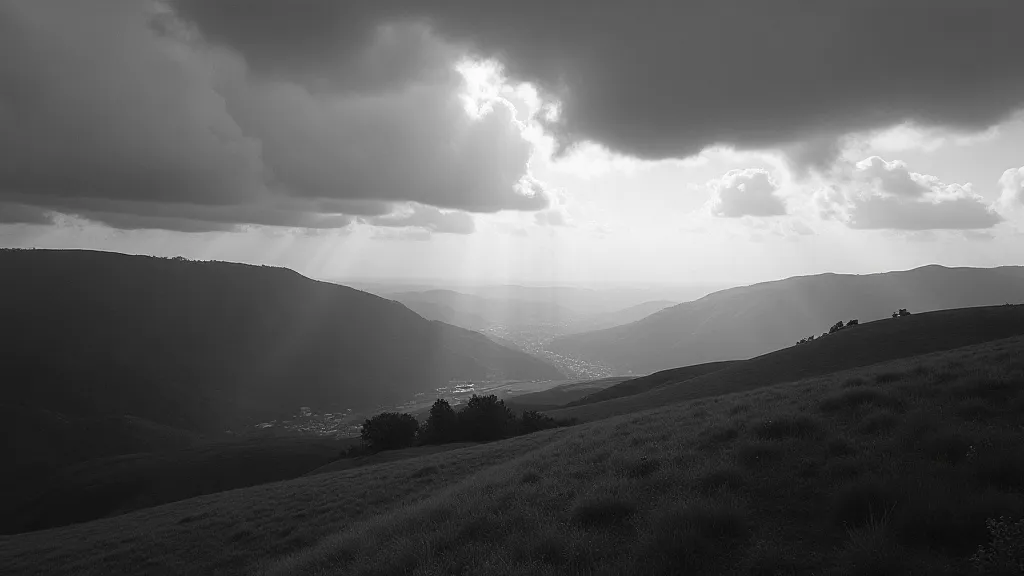Black and White Photography: A Guide for Beginners
Black and white photography, also known as monochrome photography, offers a unique and timeless aesthetic. It’s a fantastic way to learn to ‘see’ light and shadow, stripping away the distraction of color to focus on the core elements of a photograph. This guide will walk you through the basics, perfect for beginner photographers wanting to explore this captivating art form. It's about more than just removing color; it's about understanding how light interacts with a scene and how to capture that essence in grayscale.
Why Black and White Photography?
While color photography is undoubtedly vibrant, black and white offers several advantages. It forces you to consider the fundamentals of photography – light, shadow, and form – in a way that color often obscures. Understanding how to manage those elements is crucial, and the challenges inherent in monochrome photography will often reinforce other essential concepts. For example, properly exposing an image in black and white can be trickier than in color, which is directly related to understanding your camera's ISO settings – a topic we explore further in Mastering ISO: Noise, Sensitivity, and Perfect Exposure.
- Tonal Range: You’re relying solely on shades of gray, from pure white to deep black. Understanding this range is key to a compelling monochrome image.
- Contrast: Contrast becomes the defining characteristic. Strong contrast creates drama, while softer contrast evokes a more subtle mood.
- Texture and Form: Without color, texture and form take center stage. You’re encouraged to look for patterns, shapes, and the way light falls on surfaces.

Converting Your Photos to Black and White
There are several ways to convert your photos to black and white. You can do it in-camera, or in post-processing using software like Adobe Lightroom, Photoshop, or free alternatives like GIMP. The best approach often depends on the desired outcome and level of control you want.
Shooting in Black and White
Many cameras have a dedicated black and white mode. While convenient, these modes often produce results that lack nuance. They can be a good starting point but often rely on preset algorithms that don't always produce the most compelling results. It’s often better to shoot in RAW format (if your camera supports it) and convert later, giving you more control during editing. Shooting in RAW preserves more image data, allowing for greater flexibility when making adjustments in post-processing.
Post-Processing Conversion
Converting in post-processing allows for far more control. Here's a basic workflow:
- Open your image in your editing software.
- Look for the "Black & White" or "Monochrome" adjustment. (Lightroom calls it "B&W")
- Experiment with the color sliders. Most software allows you to adjust how each color channel affects the grayscale conversion. For example, increasing the red slider will make red areas in the original image appear lighter in the black and white version. Understanding how these sliders interact is critical – you're essentially rebuilding the image in grayscale based on the color information in the original.
- Adjust contrast and brightness. This is crucial for bringing out details and creating the desired mood. This ties directly into the principles of composition; a well-composed image will benefit from careful adjustment of contrast. Elements like symmetry and patterns often enhance the impact of a black and white photograph, as detailed in Composition: Symmetry and Patterns in Photography.
- Fine-tune highlights and shadows. Look for detail in both the brightest and darkest areas of the image.

Tips for Stunning Black and White Photos
Creating impactful black and white images is about more than just clicking a button. It requires an understanding of photographic principles and a keen eye for detail. A key factor is how much light is entering your camera, impacting how an image looks – a concept deeply intertwined with controlling aperture. To learn more about how to achieve optimal exposure and control the depth of field, explore Understanding Aperture: A Beginner's Guide.
- Look for Strong Contrast: High contrast scenes naturally lend themselves to black and white photography. Look for scenes with bright highlights and deep shadows.
- Pay Attention to Texture: Texture becomes more important in monochrome. Look for rough surfaces, interesting patterns, and details that add visual interest.
- Consider the Mood: Think about the emotion you want to evoke. High contrast can create a dramatic and intense feel, while softer contrast can be more peaceful and serene.
- Experiment with Different Color Channel Mixing: In your editing software, play with the color sliders to see how they affect the final black and white image. This allows for a unique look. For example, increasing the blue slider will generally lighten skies in the final monochrome image.
- Don't Be Afraid to Break the Rules: Once you understand the basics, experiment with different techniques and approaches. Photography is inherently subjective; there are few hard and fast rules, especially when exploring artistic expression.
Beyond the technical aspects, mastering black and white photography is about crafting a visual narrative. It’s about understanding how your camera interacts with light and how to best use that understanding to create compelling imagery. For instance, controlling the area of your image that’s in sharp focus dramatically impacts the story your image tells, which is a core tenet of creating depth and impact in your photographs, as you can explore further in Understanding Depth of Field: More Than Just Blurry Backgrounds.

Conclusion
Black and white photography is a rewarding journey. It simplifies the photographic process, forcing you to focus on the essentials of light, shadow, form, and texture. It is a fantastic way to deepen your understanding of fundamental photographic principles. With a little practice and experimentation, you can create stunning monochrome images that are both timeless and captivating. So, grab your camera, embrace the shades of gray, and start exploring the world in black and white! Remember to continuously refine your approach, embracing the lessons learned through practice and experimentation, and always seeking new perspectives to elevate your photographic artistry.





